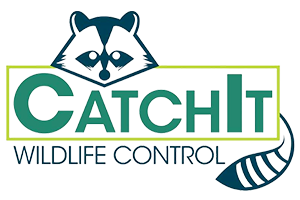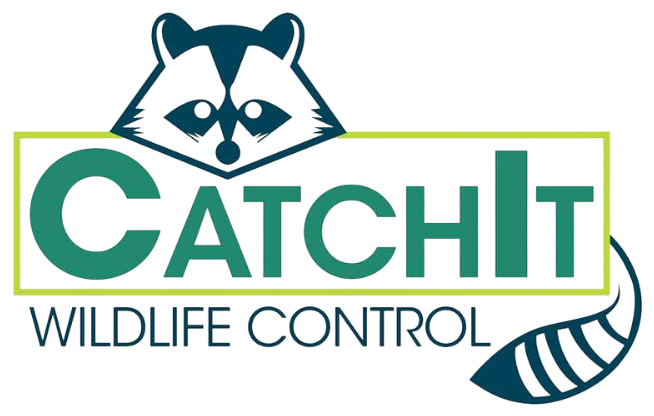Common Wildlife Found In Homes
Wildlife Encounters In Illinois
In our line of work at CatchIt Wildlife Control, we've come to realize the importance of education in wildlife management. The more homeowners understand about the common wildlife they might encounter, the more prepared they can be to handle such situations safely and humanely.
Common Wildlife Found In Homes
Rodents (Mice and Rats): It might surprise you to learn that an estimated 21 million homes in the U.S. suffer rodent invasions each winter. Mice and rats are always on the lookout for food and shelter, and unfortunately, human residences provide plenty of both. Tiny cracks or gaps are all that these creatures need to squeeze into a building. One indication of a rodent infestation could be gnawed cables or small, pellet-like droppings.
Raccoons: These nocturnal mammals are larger than most of the other critters on this list, but that doesn't stop them from seeking shelter in attics, chimneys, and underneath homes. Garbage cans are a favorite source of food for raccoons, so secured lids are a must. A tipped over bin may be a sign that you have a raccoon problem.
Squirrels: When squirrels decide to take up residence in a home, they often choose the attic. They're excellent climbers, and their small size allows them to gain access through a variety of entry points. If you hear rustling or scurrying during the day, especially in the early morning or just before sunset, squirrels might be your culprits.
Bats: Bats prefer dark and quiet spaces, making attics an ideal spot. The presence of bats is often detected by their droppings or guano. Interestingly, a single bat can consume up to 1,000 mosquito-sized insects every hour, so they play an important role in our ecosystem.
Birds (sparrows, pigeons): While birds aren't typically thought of as household pests, certain species, like sparrows and pigeons, can make nests in homes. They tend to choose spots like vents and eaves. An incessant chirping or flapping could indicate a bird infestation.
Opossums: Opossums are opportunistic creatures. They're more than happy to make a meal out of food scraps left in the open, and they can find their way into homes through unsecured openings. Their nocturnal nature means that they're more likely to make their presence known after dark.
Snakes: Snakes usually invade homes in search of prey, like rats and mice. Therefore, a snake in your home might indicate a larger pest problem. While most household snakes are harmless, it's essential to treat any snake with caution.
Skunks: Known for their powerful, foul-smelling spray, skunks are typically found in yards rather than inside homes. However, they might burrow under structures like porches or decks, so their potential for property damage is significant.
The Dangers of Wildlife Home Invasions
When wild animals make themselves at home in human residences, they can pose significant health and safety risks. Wildlife can carry diseases like rabies, Hantavirus, Lyme disease, and more. They can also cause physical harm if they feel threatened and decide to defend themselves.
In addition to health risks, wildlife invaders can also cause considerable property damage. From gnawing rodents that can cause electrical fires to raccoons that can tear up roofing materials and insulation, these animals can cost homeowners thousands of dollars in repairs. In fact, rodents alone are estimated to cause around $20 billion in property damage annually in the U.S.
Why Do Animals Invade Homes?
Typically, animals invade homes for three primary reasons: food, shelter, and a place to breed. As humans continue to expand their living areas into natural habitats, these invasions are likely to become even more common.
Prevention is the first line of defense against wildlife invasions. This includes actions like sealing potential entry points in your home's exterior, proper waste management to avoid attracting scavengers, not leaving pet food outside, and conducting regular inspections of your property to identify and address potential issues early.
What to Do When You Find Wildlife in Your Home
If you find a wild animal in your home, the first step is to ensure the safety of all human inhabitants. Avoid trying to corner or capture the animal, as this can provoke an aggressive response. Instead, try to identify the species from a safe distance and take note of any potential entry points it may have used.
Remember, it's crucial not to attempt DIY removal. Many wild animals carry diseases, and improper handling can lead to injury. In addition, some species are protected by law, meaning that they must be handled in specific ways that only licensed professionals are permitted to do.
Professionals, like our team at CatchIt Wildlife Control, specialize in humanely removing wildlife from homes. We're trained to manage these situations effectively, minimizing the risk of harm to both humans and animals. We also provide clean-up and decontamination services to help prevent future invasions.
Understanding the who, why, and how of wildlife home invasions is a crucial part of preventing and managing these situations. If you find yourself hosting some uninvited guests, remember that professional help is available.
900 Commerce Place
Suite 1001
Forsyth, IL 62535
CatchIt Wildlife Control


